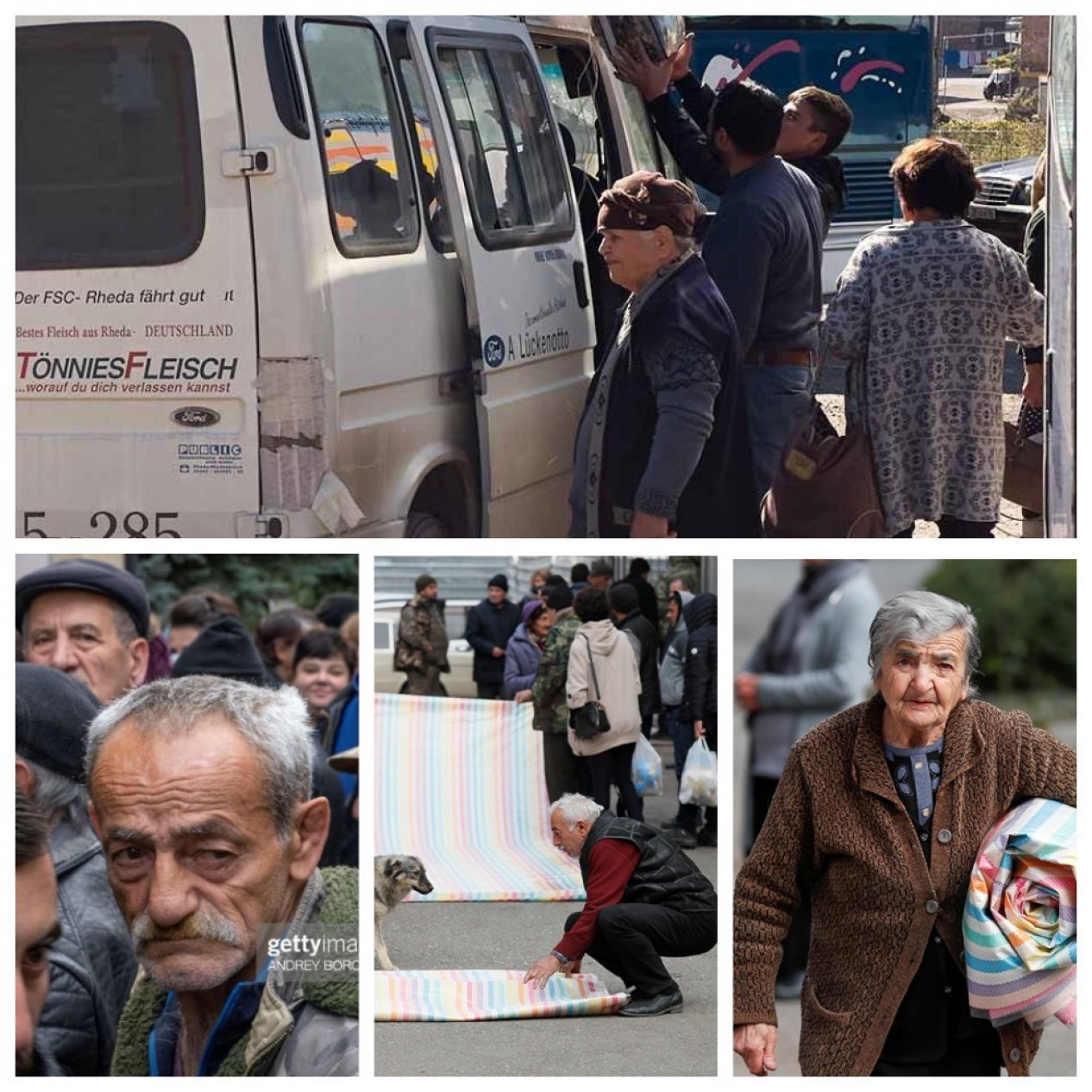
Eco-activists and representatives of NGOs are protesting against the illegal exploitation of mineral deposits, especially the Gizilbulag gold and Demirli copper-molybdenum deposits in the areas under the temporary control of Russian peacekeepers, on the Shusha-Khankandi road. The Armenian side has several arguments regarding this rally. They claim that the participants in the protest action are not NGO representatives, and that 120,000 people remain in the blockade in Karabakh, medical supplies, food and fuel have run out, and that a humanitarian disaster and even genocide has been committed.
Among these claims, the argument that "participants are not representatives of NGOs" is not relevant to the topic. It does not seem logical to ignore the demands of the participants of the action based on this. The words "humanitarian disaster" and "genocide" have already been uttered by the other side so inappropriately and senselessly that it arouses a feeling of disgust. However, the participants of the rally opened the corridor several times in the last two days and created conditions for the transportation of emergency medical vehicles, patients and daily necessities.
In recent days, we have witnessed that both Armenian officials and foreigners under the influence of the Armenian lobby use the phrase "120,000 residents are under blockade" more often. Let's take a few examples:
"120,000 people are in the blockade, in actual hostage conditions," writes Armenia Today, referring to Prime Minister of Armenia Nikol Pashinyan. Chairman of the National Assembly (Parliament) of Armenia Alen Simonyan tweeted twice on this topic. On December 13, Simonyan wrote that "So-called Azerbaijani “environmentalists” in civilian outfit and with officer ranks blocked only route connecting NK with Armenia, literally taking hostages 120,000 Armenians", and on December 14, “Baku took 120,000 people hostage, blocking free movement, and creating a humanitarian disaster by cutting off natural gas supplies in the winter season highlights the need for greater international monitoring in Nagorno-Karabakh.”
Apart from these, Jean-Christophe Buisson, deputy editor-in-chief of Le Figaro, one of the major French newspapers (the lives of 120,000 Armenians of Artsakh/Nagorno-Karabakh are in danger), Member of the European Parliament François-Xavier Bellamy (even tonight, Azerbaijan keeps 120,000 civilians from Nagorno-Karabakh in a humanitarian crisis), US Congresswoman Katie Porter (Azerbaijan’s reported blockade of Nagorno-Karabakh threatens to cut off gas to 120,000 Armenians as winter begins), Isabelle Santiago, member of the French National Assembly (We must act now to save the 120,000 inhabitants of Artsakh!) Eric Ciotti, member of the French National Assembly (120,000 Armenians have been cut off from all contact with the world), German blogger Sascha Duerkop (Currently, Azerbaijan has cut off the only road to Nagorno-Karabakh and the energy supply, holding about 120,000 civilians hostage), Armenian-born deputy mayor of Paris Anouch Toranian (For 120,000 Armenians seriously there is a humanitarian crisis, gas transportation is cut off in the middle of winter and patients are waiting to be relocated) - voiced their opinion about "120,000" Armenians. All these are only tweets and statements made on December 13-14.
Faktyoxla Lab. has investigated whether 120,000 people live in the areas under the temporary control of Russian peacekeepers.
Research method 1.
To clarify this fact, it is necessary to first look at the page of the "election commission" of the so-called regime.
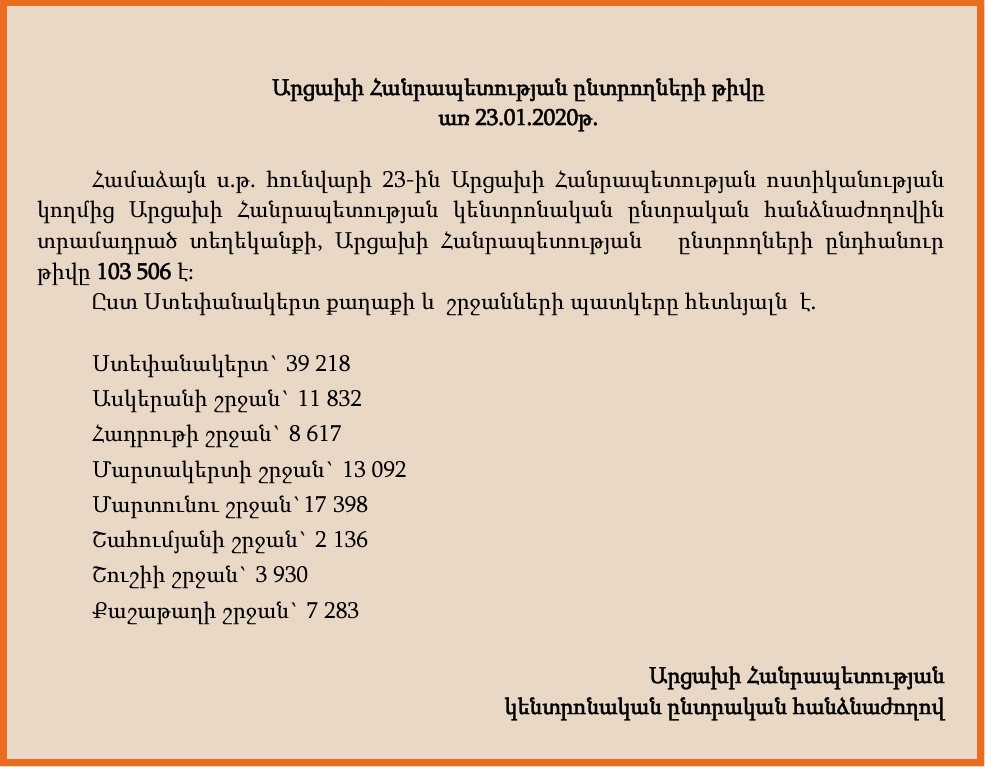
The text provides information on the number of voters of the so-called institution as of 23.01.2020. It was noted that the total number of voters is 103,506.
Khankandi: 39,218
Askaran district: 11,832
Hadrut district: 8,617
Aghdara district: 13,092
Khojavand district: 17,398
Shaumyan district: 2,136
Shusha city: 3,930
Lachin district: 7,283
After the 44-day war, Azerbaijan fully returned Hadrut district, Shusha city and surrounding villages, Lachin district. In the first days of the war, the villages of Sugovushan and Talish of Aghdara district, which they called Martakert, Farrukh and Pirlar villages of Askaran district, Taglar, Chaylaggala, Ashagi Taglar villages of Khojavand district were cleared of illegal military units hidden in the area. According to the November 10 agreement, Aghdam district was completely returned. During the occupation, several villages of Aghdam district (Shelli, Gasimli, etc.) were included in Askaran district by Armenians. Thus, if we subtract some indicators of Shusha, Lachin, Hadrut, Askaran (some villages), Aghdara (Sugovushan, Talish) and Khojavand from the statistics of Armenians on 23.01.2020 (that is, the population who moved there after the occupation moved to other districts), we get that there are about 70,000 people left. As the Armenians claim, if we add 40% children, it makes 102,000 people. These are the claims of Armenians. But what is the real situation?
In recent times, the so-called regime has held illegal elections to local self-governing bodies four times. Let's examine the documents and other materials in open sources related to the voters participating in that "election" game.
Fact 1. The results of the "election" held on October 10, 2021 in the communities of Tsakashat and Khachmach of Askaran district, Yeni Gazanchi (Nor ganzi) of Aghdara district, and Gargar of Khojavand district were announced on October 12, 2021. Let's leave aside who was elected where and how many votes he or she got, and focus on the main fact that we need. The announcement states that 440 people participated in the "elections" to local self-governing bodies (communities). This means 59.2% of the total number of voters. Thus, it is clear that a total of 700 voters (440x59.2:100+440) live in the mentioned communities. If we add 40% of children and teenagers claimed by the Armenians to this indicator, we get 980.
Russian version available here
Fact 2. The results of the election to local self-government bodies (communities) held on December 10, 2021 were announced on December 13, 2021. According to the statement given to the media, the elections were held in Khojavand city and Gishi community of Khojavand district. The statement noted that 1,859 voters participated in these "elections" and this figure is 37.05% of the total number of voters. Thus, it is clear that there are 6,876 voters in these communities. We get 11,460 people on top of this indicator, 40% of children and adolescents claimed by the Armenians.
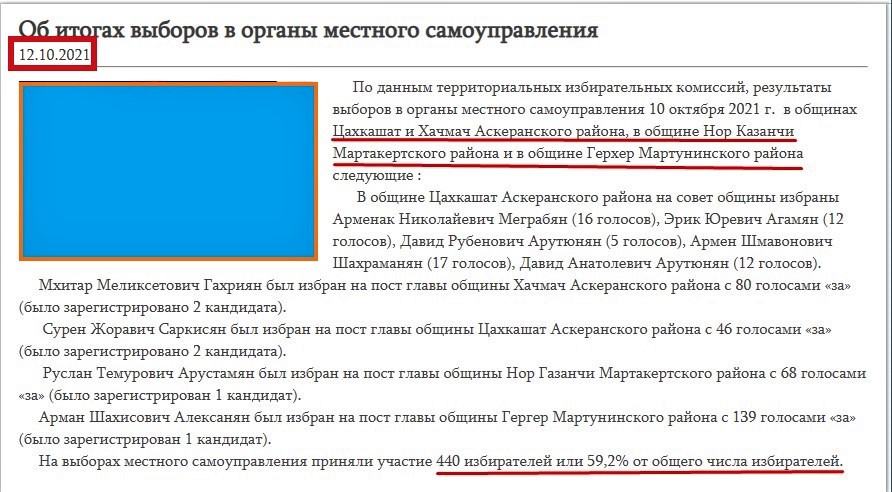
Fact 3. The results of the local self-government elections held on April 10, 2022 were announced to the public on April 13, 2022. The published information states that the elections are considered to have taken place in Berdashen, Norshen, Tsovatex, Sos, Varanda and Aknaberd communities of Khojavand region. It was noted that 1,258 voters took part in these elections, which means 49.35% of the total voters. Thus, it is clear that the total number of voters in these communities is 2,549 people. On top of this indicator, 40% claimed by Armenians makes the number of children and adolescents 4,248.

Fact 4. The results of the election held on October 9, 2022 in Tsmakaox, Vang, Nor Gazanchi, Mokkhratax, Khojavend region, Kherkhan communities of Aghdara region were announced on October 18, 2022. It is noted in the information that 698 voters from these communities took part in the local self-government elections, which is 41.72% of the total number of voters. Thus, it turns out that there are 1,673 voters in these communities. On top of this indicator, 40% of the number of children-adolescents claimed by Armenians is 2,788.
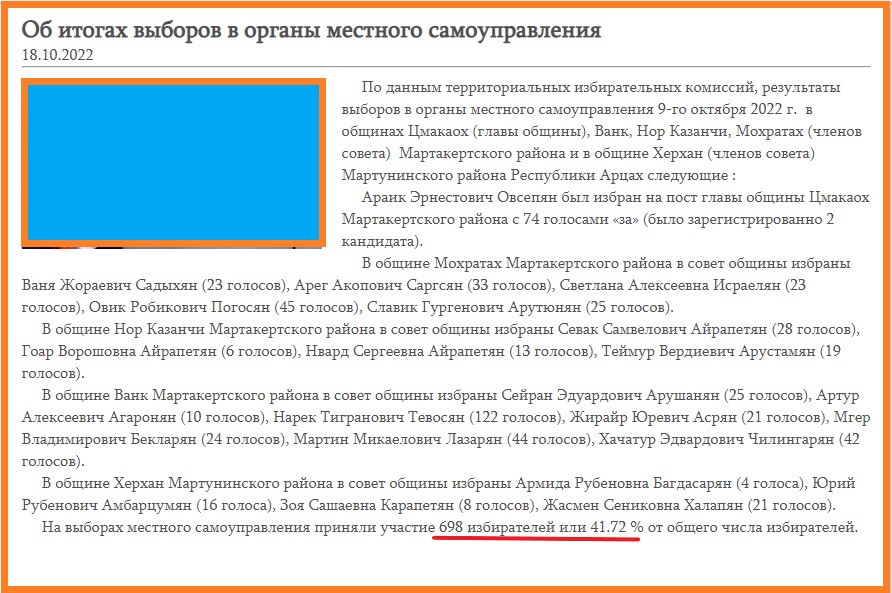
Thus, adding the mentioned numbers gives 18,496. Since the results of the "elections" held in the cities of Khankandi and Aghdara to local self-government bodies have not been announced, we cannot give the final result.
Research method 2. Another source we researched was the statistics of the return of Armenians who fled their places of residence during the war accompanied by peacekeepers. In this table, which we have prepared with reference to the Russian Ministry of Defense and other Russian-language, as well as Armenian websites, we have indicated the date of the month, the number of returned Armenians, the cited source and the total number of returnees.
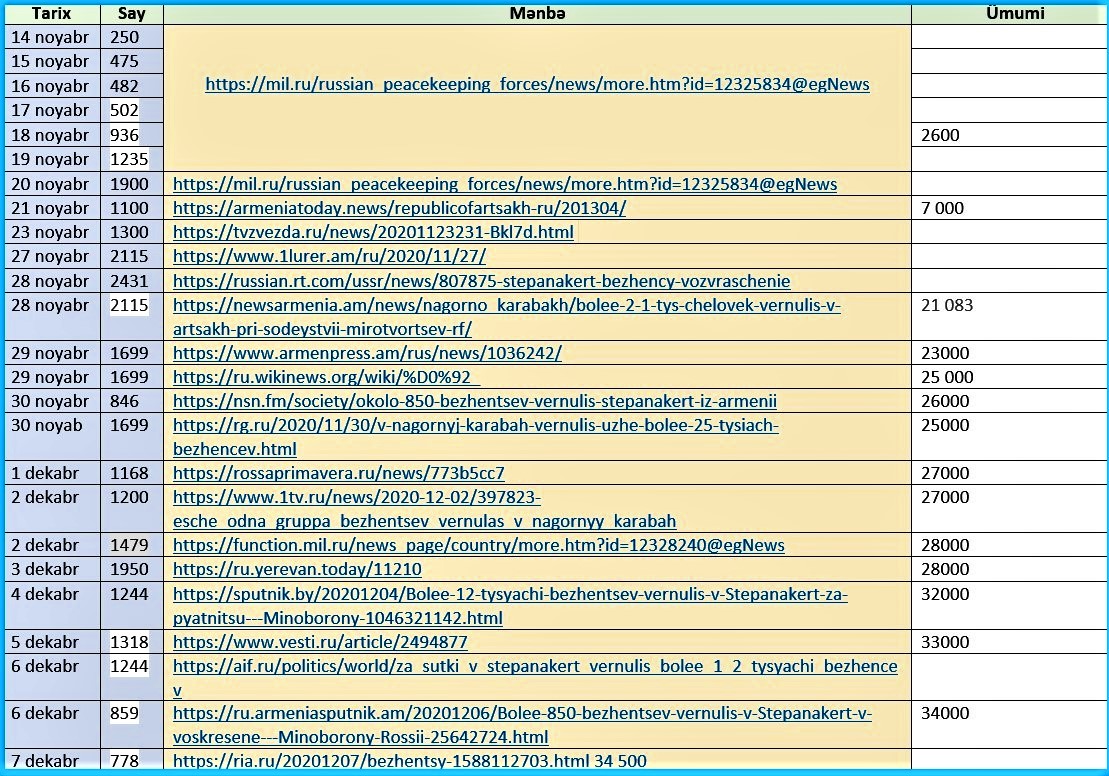
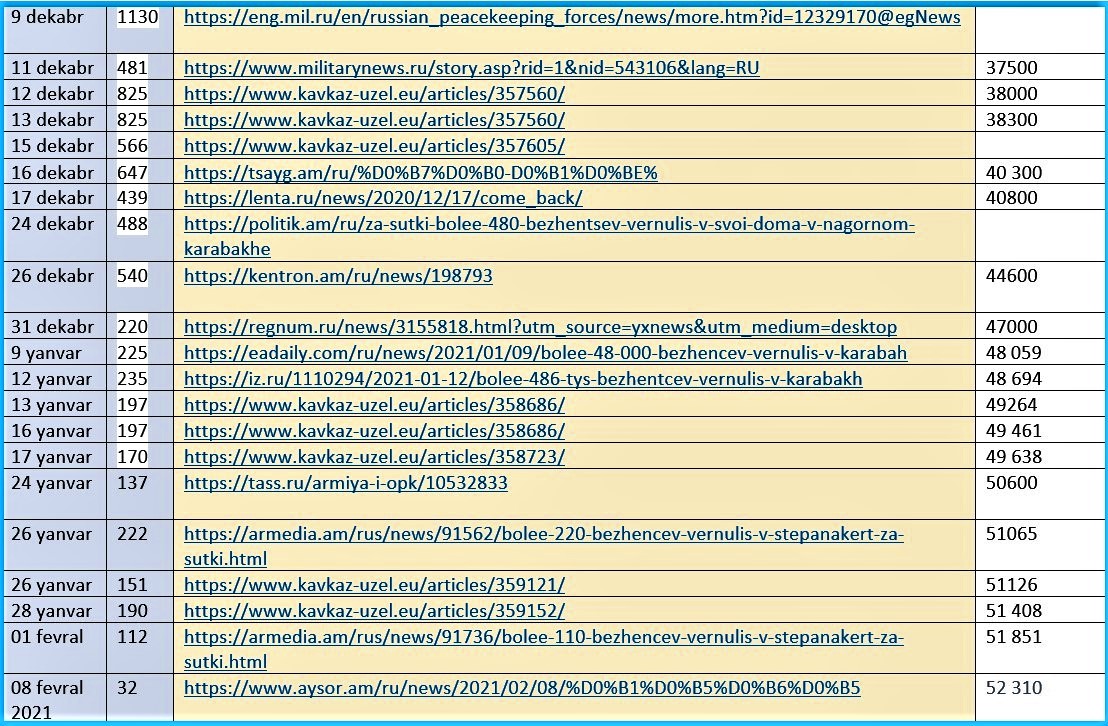
As we know, the return of Armenians who fled from Karabakh started on November 14, 2020. The figures announced for the first six days on November 14-19 were taken from the official website of the Ministry of Defense of Russia. The information released on those days indicated how many people arrived and how many buses were used for this purpose. For some reason, this information was not provided in the following days.
|
November 14 2020 |
9 buses (250 persons) |
around 27 passengers |
|
November 15 |
19 buses (475 persons) |
25 passengers |
|
November 16 |
19 buses (482 persons) |
25 passengers |
|
November 17 |
24 buses (502 persons) |
20 passengers |
|
November 18 |
23 buses (936 persons) |
40 passengers |
|
November 19 |
27 buses (1235 persons) |
45 passengers |
It seems that they thought that with such disclosure of information (number of buses and passengers) the numbers would not match, so they changed the form of information dissemination.
Now let's focus on the numbers.
When the total number of returnees was first announced, that is, on November 21, 2020, 7,000 people were listed, adding up the figures they submitted, and 6,880 are obtained. But when the second total number was announced on November 28, a serious difference was seen. So, 21,083 were written in the press release, but 14,841 are obtained by calculations. What steps did the Armenian side take to get out of this situation? Jirayr Mirzoyan, the Minister of Territorial Management and Development of the so-called institution, found a way out of the inconsistency of the information. He said in his statement on November 30 that the Ministry of Defense of Russia does not specify the exact number. They did not mention the Armenians who did not come accompanied by peacekeepers. If so, 30,000 more should have been added to that number. reference
Back to the table. Let us state in advance that the number of Armenians returning to the territories under the temporary control of Russian peacekeepers is inconsistency, fake numbers, exaggerated indicators attract attention.
For example, according to Russian media on November 28, 2,431 people were returned, while Armenian sources indicate 2,115 people. Here we witness that the Russians are more zealous in showing the number already. Or, let's pay attention to the information released on November 29. The number of passengers is the same in both sources. But if the Armenian source claims that 23,500 people returned from November 14 to November 29, the Russian source shows this number at 25,000.
![]()

A similar situation happened on December 6. The Russian publication "Argumenti i fakti" compared to figures given by "Sputnik Armenia": 1,244 and 859.

Another fact: in the information released on November 30, there is a significant difference between the numbers. It is interesting that the source, which shows a small number, shows the total number by 1,000 people more than the indication of "Rossiyskaya Gazeta".

On December 1-3, we come across an example of complete fraud. Let's note: on December 1, the total number was 27,000, but on December 2, despite the addition of 1,200 people, they kept the total number unchanged. On December 2, two sources presented different figures. The same applies to December 2 and 3. The number varies, it does not affect the total result.

In short, after a long and intense activity, they finally managed to show that "52,000" people "returned" to Karabakh. According to our calculations, this number is not more than 21,000-22,000. This is close to our calculated number (18,496).
Research method 3. As we know, on October 30, a separatist, Russian billionaire Ruben Vardanyan organized a rally in Khankandi. According to the Armenian media, 40,000 Armenians participated in the action. Let's put aside the political message and timing of this action and examine the facts.
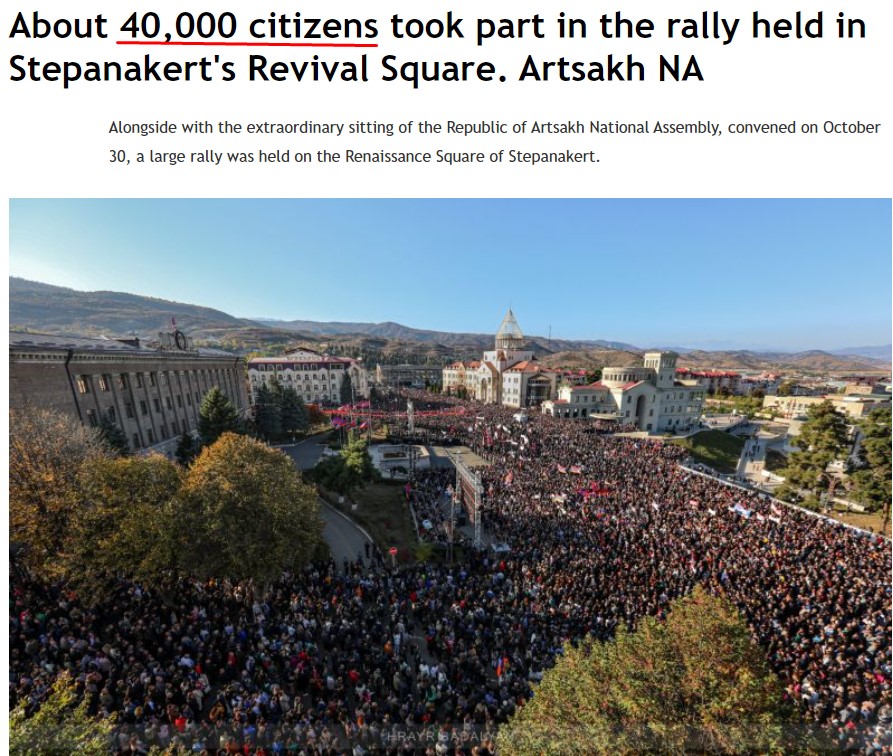
In this rally held on the "Revival" square in Khankandi, filming was done from several angles, so it is possible to reveal the facts we need through these shots. Among them, the buses ordered to bring the participants to the rally appeared in the square, the area occupied by the 70-meter flag and the mass of military personnel exposed to the cameras, etc. can be noted.
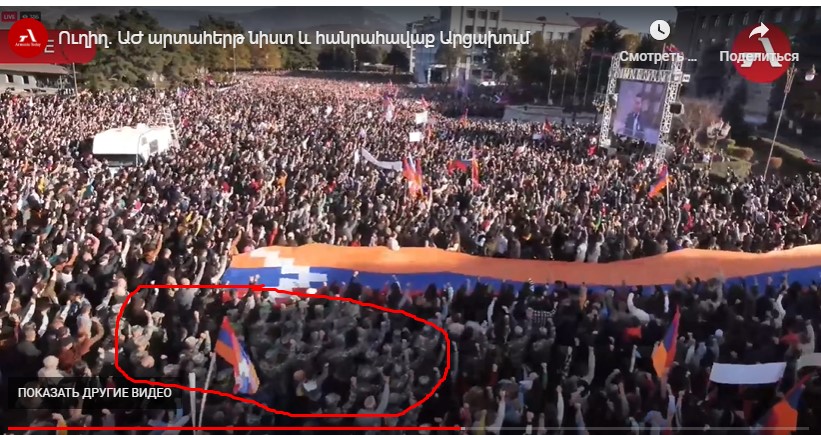
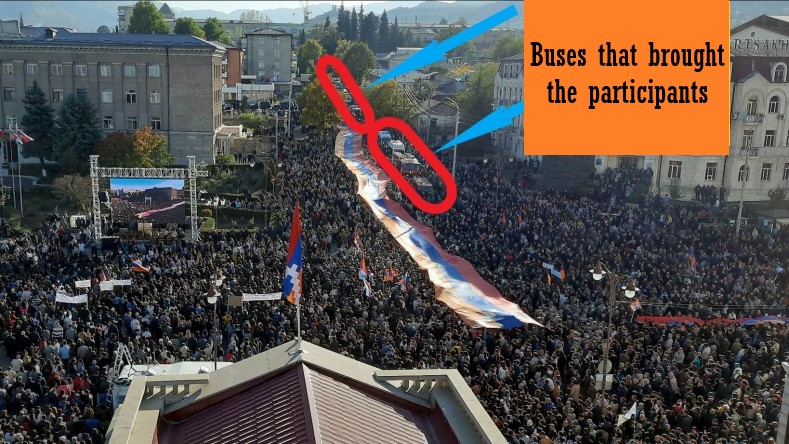
But we will still investigate based on the facts provided by the Armenians.
There is a "map checking" addition that counts the number of people holding a rally in an open area. With the help of that addition, we can calculate the number of participants in the event.
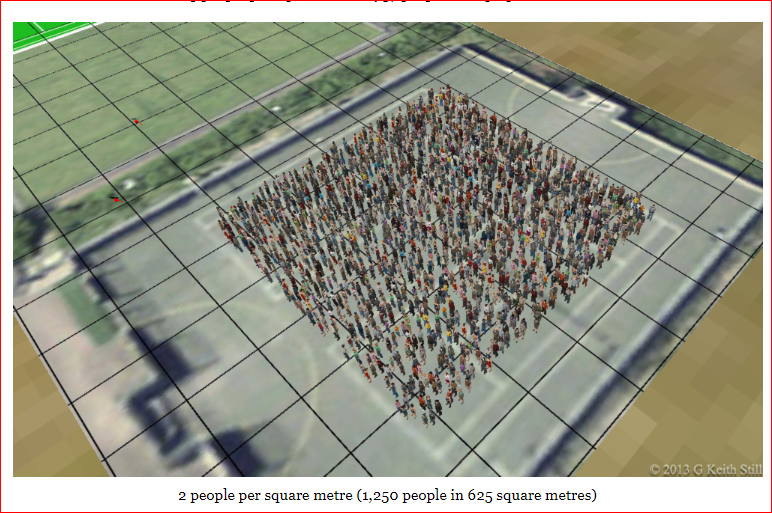
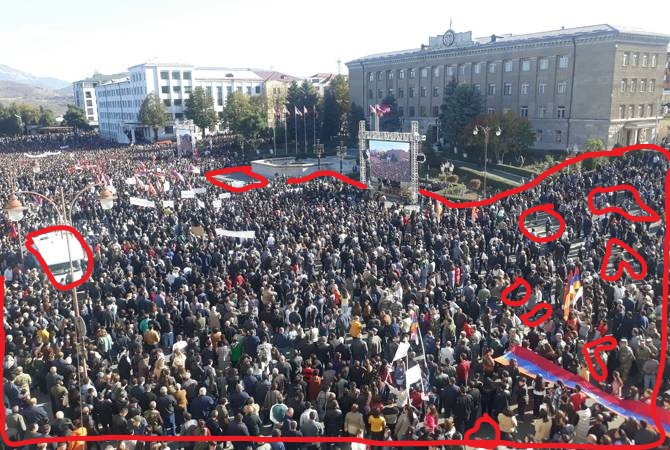
Taking into account all these indicators, we draw the approximate area in the appendix we mentioned.
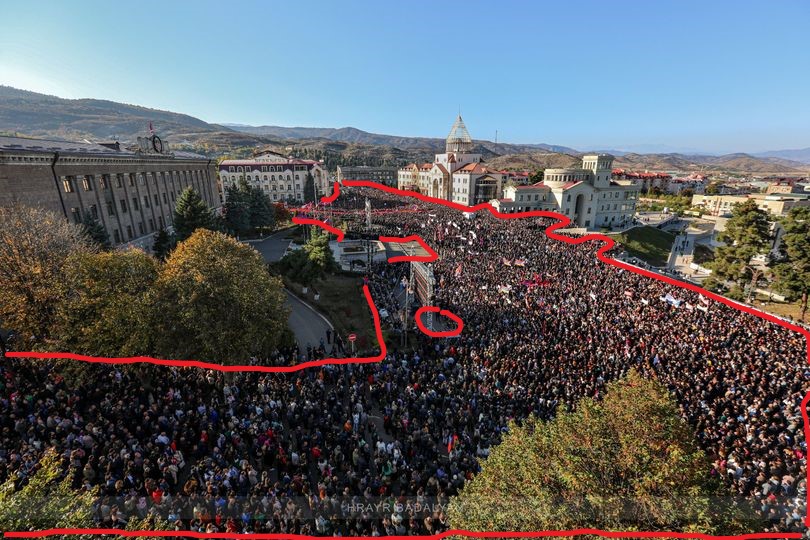
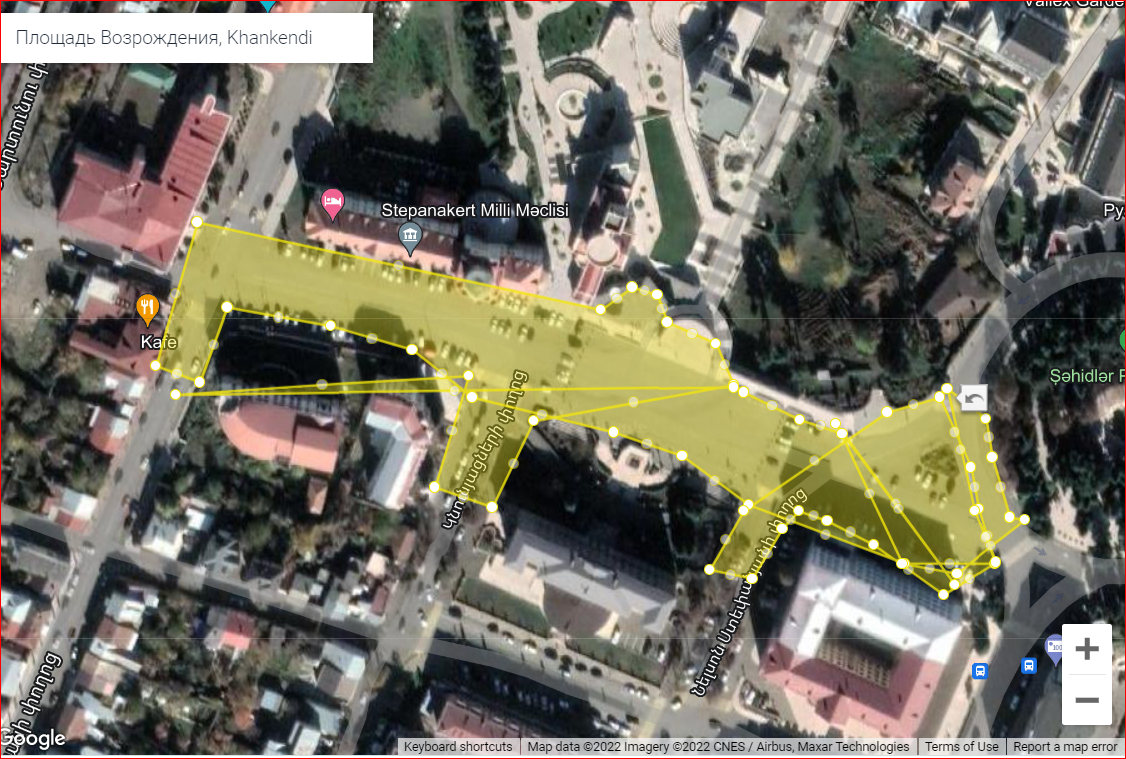
After that, when putting the indicators in place, the program itself shows the number of participants:
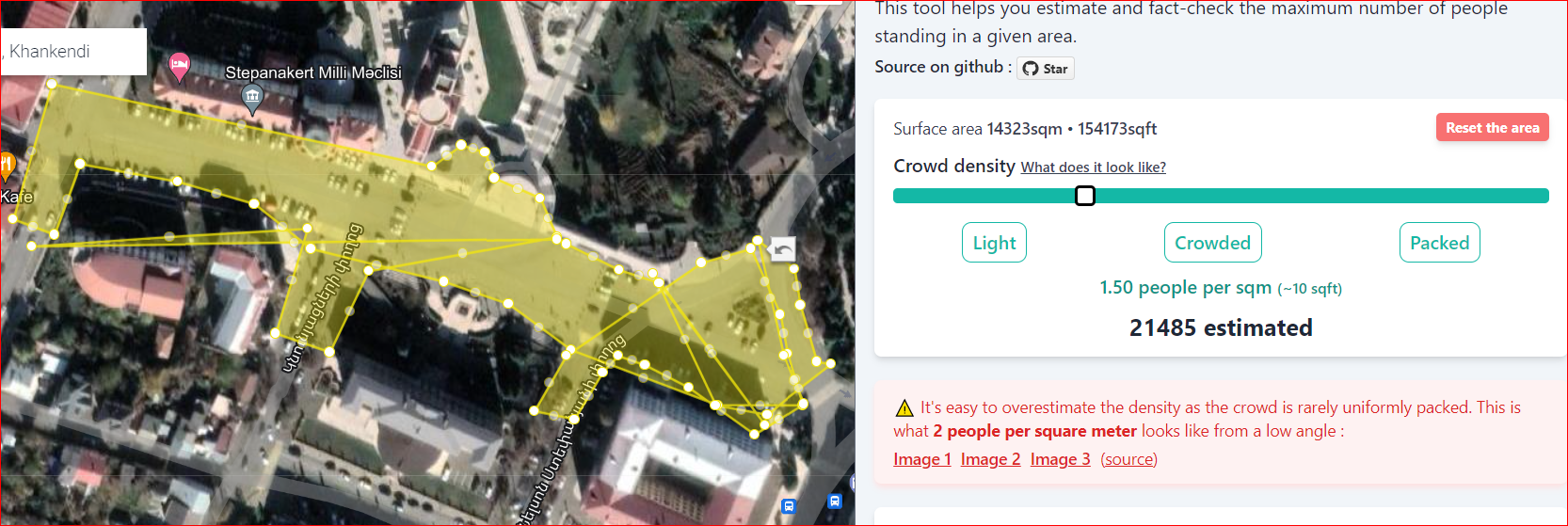
That is, a total of 21,485 people participated. We have not yet taken into account the 70-meter flag, the buses, the retail posture of people. We proved that 21,000 people actually participated in the 40,000-strong rally that Armenians proudly spoke about. Despite that billionaire Vardanyan spent a large amount of money, transported passengers from Armenia for days, mobilized all forces, and brought fighters of illegal military units, they gathered only 21,000 participants.
What do we conclude? 120,000 people do not live in Karabakh, as the Armenians claim. The number of Armenians living in Khankandi is not more than 11,000-12,000. If we compare our calculations based on voter lists and the number of Armenians who returned after the war, we can claim that the number of Armenians living in Karabakh is around 24,000-26,000.
We repeat once again that even if not 120,000 people, as claimed by the Armenians, but a million people lived in Karabakh, the demands of Azerbaijani eco-activists, NGOs and media representatives have nothing to do with this number. This study was conducted solely and exclusively to expose this false argument of the Armenians.




















